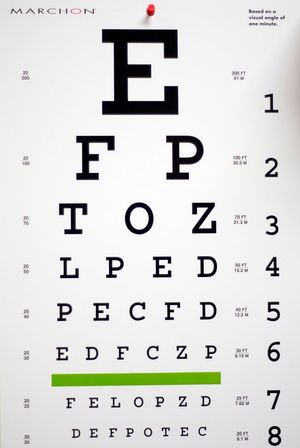
During a complete eye exam, your optometrist will not only determine your prescription for eyeglasses or contact lenses, but will also check your eyes for common eye diseases, assess how your eyes work together as a team and evaluate your eyes as an indicator of your overall health.
A comprehensive eye exam includes a number of tests and procedures to examine and evaluate the health of your eyes and the quality of your vision. These tests range from simple ones, like having you read an eye chart, to complex tests, such as using a high-powered lens to examine the health of the tissues inside of your eyes.
Eyecare experts recommend you have a complete eye exam every one to two years, depending on your age, risk factors, and physical condition.
Children. Some experts estimate that approximately 5% to 10% of pre-schoolers and 25% of school-aged children have vision problems. According to the latest guidelines by the Canadian Association of Optometrists (CAO), all children should have a baby wellness eye examination between 6 and 9 months of age, and at least once between age 2 and 5. Children without vision problems or risk factors for eye or vision problems should then continue to have their eyes examined every one to two years throughout school.
Children with existing vision problems or risk factors need to have their eyes examined yearly. Common risk factors for vision problems include:
- premature birth
- developmental delays
- turned or crossed eyes
- family history of eye disease
- history of eye injury
- other physical illness or disease
Adults. The CAO recommends an eye exam every two years, depending on the rate of change of your vision and overall health. Doctors often recommend more frequent examinations for adults with diabetes, high blood pressure and other disorders, because many diseases can have an impact on vision and eye health. Contact lens wearers should also be seen annually.
If you are over 40, it's a good idea to have your eyes examined every one to two years to check for common age-related eye problems such as presbyopia, cataracts and macular degeneration. Read more about Vision After 40.
Because the risk of eye disease continues to increase with advancing age, everyone over the age of 65 should be examined annually. Read more about Vision After 65.
